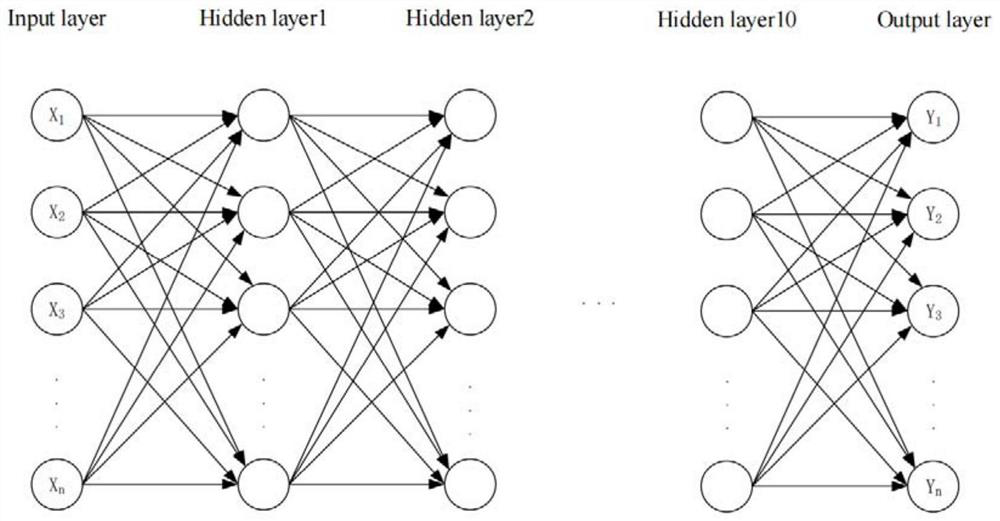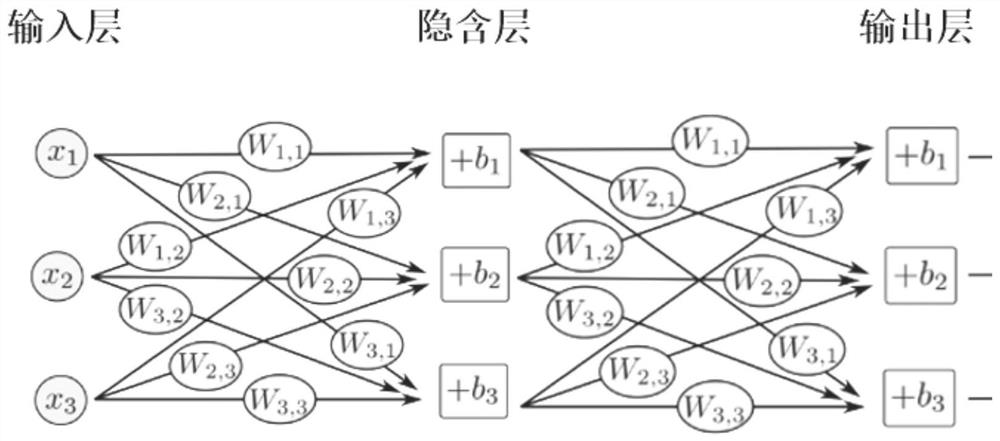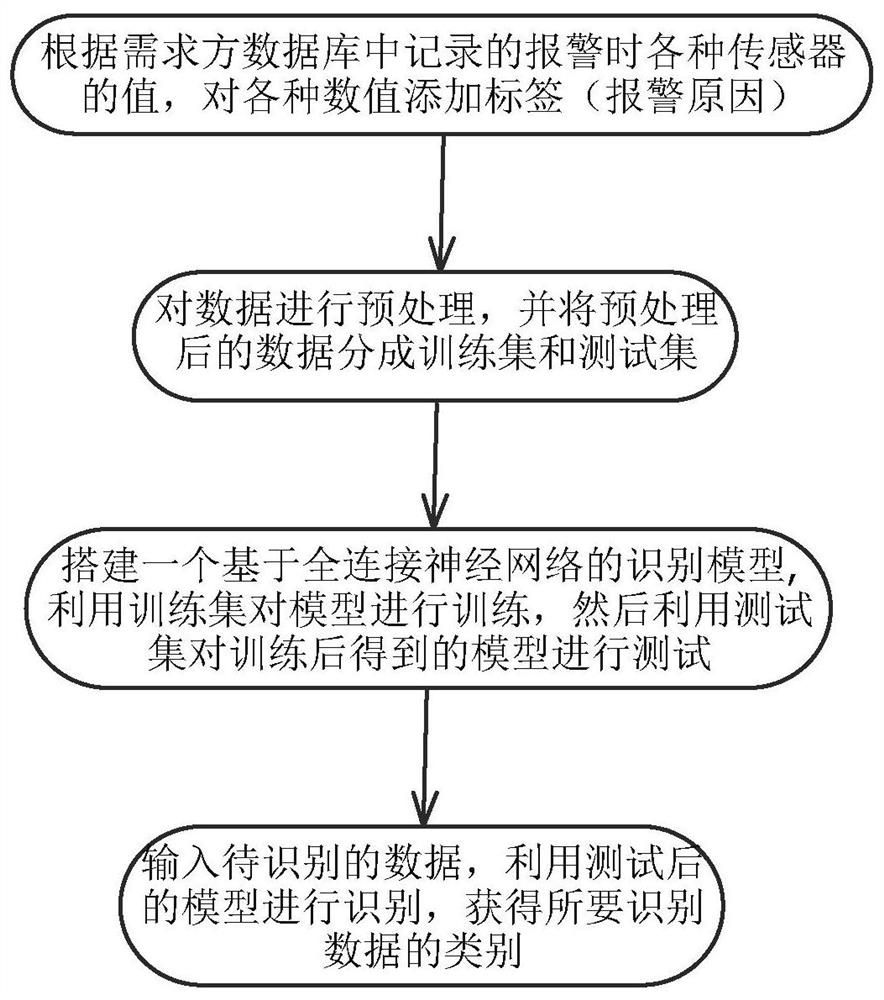Method for intelligently identifying and predicting underground safety accident based on CO monitoring data
A technology of monitoring data and intelligent identification, which is applied in neural learning methods, earthwork drilling, mining equipment, etc., can solve the problem of which accident causes are not reflected in the early warning of gas classification, and achieve reduced labor costs, high prediction accuracy, and fast The effect of using
- Summary
- Abstract
- Description
- Claims
- Application Information
AI Technical Summary
Problems solved by technology
Method used
Image
Examples
Embodiment 1
[0097] An intelligent identification method based on CO monitoring data, comprising:
[0098] 1) Preprocessing the collected carbon monoxide data that caused the alarm:
[0099] The carbon monoxide data is divided into a training set and a test set, and the training set and the test set include multiple groups of data respectively: each group of carbon monoxide data is x={x 1 ,x 2 ,Λ,x n}, the cause of each group of alarms is o={o 1 ,o 2 ,Λ,o p}, in the implementation of the present invention, the data when selecting 200 groups of carbon monoxide sensors to report to the police is analyzed, and the first 180 groups of data are used as training sets, and the back 20 groups of data are used as test sets;
[0100] Use Min-Max standardization to map all carbon monoxide data to [0,1]:
[0101]
[0102] This technical feature is used to eliminate the dimensional influence between data and conduct comprehensive comparison and evaluation, so that the operating efficiency and ...
Embodiment 2
[0144] A method for intelligently predicting underground safety accidents based on CO monitoring data, comprising:
[0145] 7) Data preparation: input the data value of the carbon monoxide sensor to be predicted, and extract the data value of the carbon monoxide sensor monitored per second within one minute as the training data, denoted as x={x 1 , x 2,...,x 60}; The design and training process of the network will not change due to the number of training samples, but the network trained with large-capacity samples will have smaller prediction errors and stronger extrapolation capabilities;
[0146] 8) Normalize the training data:
[0147]
[0148] 9) Denormalization calculation formula:
[0149]
[0150] Among them, z i is the normalized data;
[0151] 10) Group the normalized data into groups, 10 data as a group, here z n ~z n+9 is a group, n ∈ [1, 2...51], and is divided into 51 groups of data; the first 45 groups of samples are used as training sets, and the la...
PUM
 Login to View More
Login to View More Abstract
Description
Claims
Application Information
 Login to View More
Login to View More - R&D
- Intellectual Property
- Life Sciences
- Materials
- Tech Scout
- Unparalleled Data Quality
- Higher Quality Content
- 60% Fewer Hallucinations
Browse by: Latest US Patents, China's latest patents, Technical Efficacy Thesaurus, Application Domain, Technology Topic, Popular Technical Reports.
© 2025 PatSnap. All rights reserved.Legal|Privacy policy|Modern Slavery Act Transparency Statement|Sitemap|About US| Contact US: help@patsnap.com



